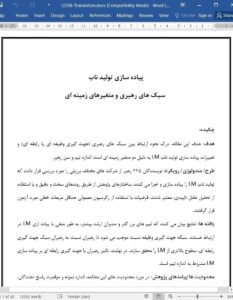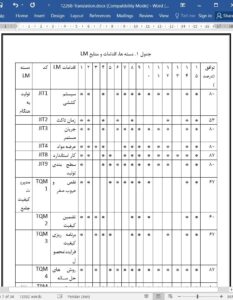Abstract
Purpose The purpose of this paper is to understand how the association between leadership styles (task or relation orientation) and lean manufacturing (LM) implementation changes due to two contextual variables, team size and the leader’s age.
Design/methodology/approach The authors carried out a survey with 225 leaders from different Brazilian companies that are implementing LM. Research constructs were validated through rigorous procedures using confirmatory factor analysis. Hypotheses were tested using ordinary linear least squares regression.
Findings The results suggest that larger teams and more senior managers were negatively associated with LM implementation. Task-orientation style makes leaders more likely to achieve higher levels of LM than relation-orientation style leaders. Finally, the influence of relation-oriented leaders on LM implementation is contingent upon the size of the team.
Research limitations/implications Regarding study’s limitations, sample size and respondents’ location restrict results to this contextual condition, indicating that increasing the sample would help provide wider and more generalizable results. It is also worth noting that results are based on respondents’ (leaders) perspective. Hence, future studies may collect data from multiple perspectives, such as leaders and their followers, in order to compare results so as to verify the convergence or divergence among different respondents.
Practical implications The results suggest that leaders should have different behaviors according to the context in which they are inserted. Therefore, such behavioral prescriptions are useful for managers since they are pressured to achieve high operational performance in short time periods and with few resources. Further, companies undergoing lean implementation may also be able to stimulate proper leadership behaviors and promote development programs accordingly, which is extremely relevant since behavioral changes usually take time.
Originality/value The evolutionary process for achieving a successful lean enterprise requires different leadership styles according to the context in which leaders are inserted. This research provides arguments to help better understand the recommended leadership behaviors for lean implementation, complementing existing roadmaps by considering the proper leadership style as a contingency issue during lean implementation. Moreover, identifying the effect of contextual variables helps specify the contexts in which lean practices are more likely to be implemented.
1. Introduction
In the transition from a traditional mass-production organization to a lean manufacturing (LM) enterprise, transformation in both technical and socio-cultural aspects is needed (Tortorella and Fogliatto, 2014). Since a successful LM implementation is highly dependent on firm employees (Sawhney and Chason, 2005), it is important to comprehend the underlying culture of LM practices (Bhasin and Burcher, 2006). In this context, leaders play a crucial role in the establishment of such lean culture (Mann, 2009; Shook, 2010).











